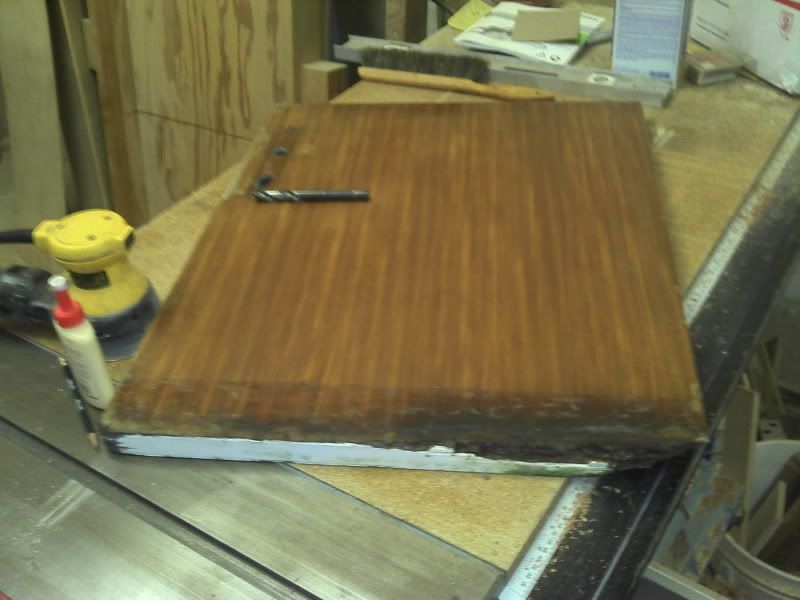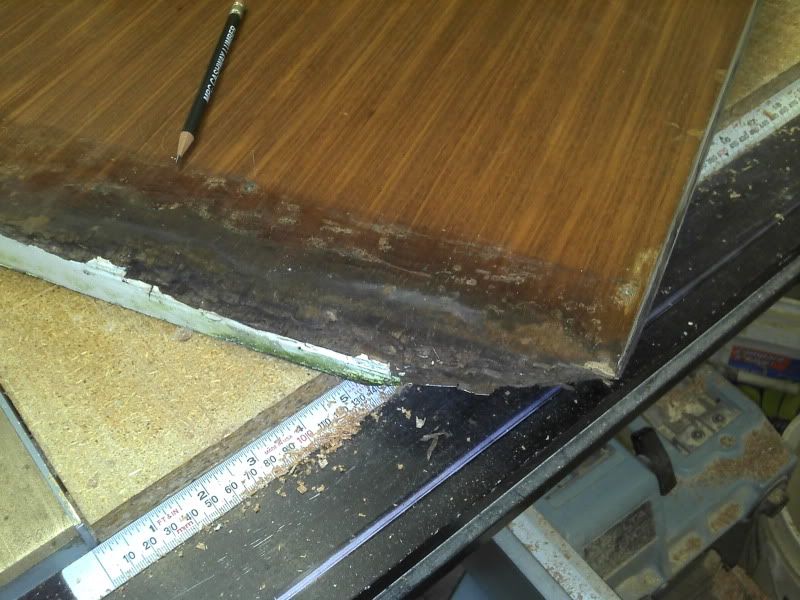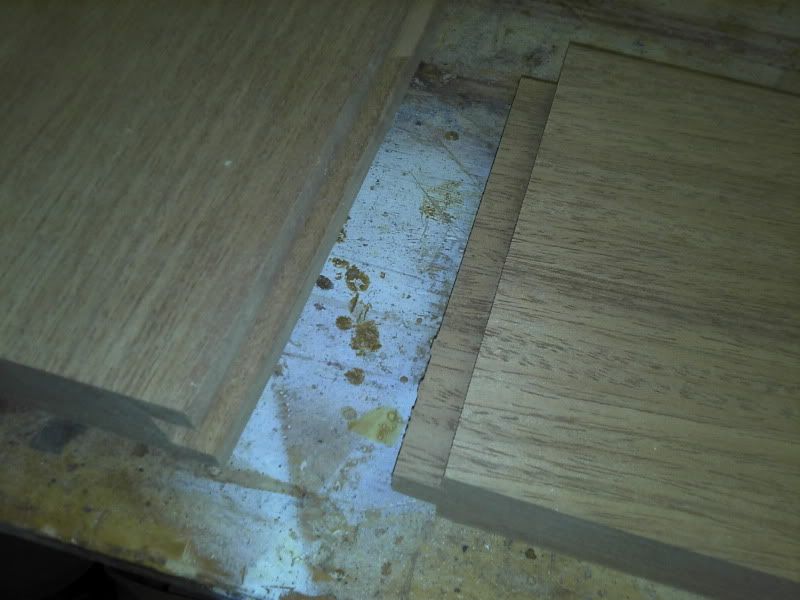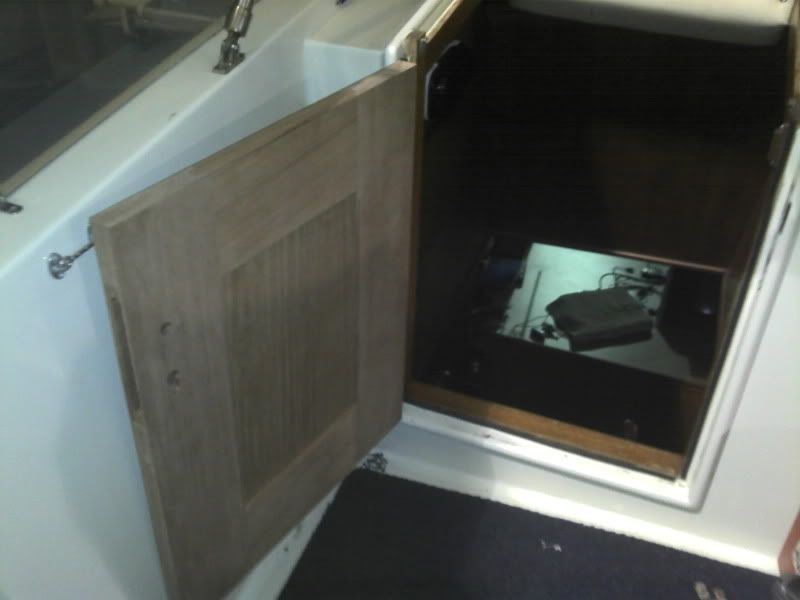SKYCHENEY
Legendary Member
- Joined
- Apr 12, 2005
- Messages
- 15,523
- Status
- OWNER - I own a Hatteras Yacht
- Hatteras Model
- 53' EXTENDED DECKHOUSE (1983 - 1988)
I just pulled the flybridge door off of a 1988 60MY so I can rebuild it. I was shocked to see that it was made by simply laminating three pieces of 3/8" plywood together. They painted the outside of it with Imron and put some nice afromosia veneer on the inside, but the edges were exposed and the bottom of the door just sucked up water and disintegrated.
This got me thinking. My same door on my 1985 AMF boat was constructed of solid teak on all four sides with only a small piece of plywood in the center. This door has held up well while the Genmar door is now junk.
So then I started looking for other differences. I noticed that the 1988 boat had no trim on any of the cabinet doors or drawers. This may have "updated" the look, but it was also much cheaper to produce. The 1988 boat also has the grey plastic water lines instead of copper. And it has aluminum pilot house doors instead of teak. The aluminum doors may stay nice and straight with no chance of warping, but they do corrode and replacing the wheels and hardware is not as easy as on the old teak doors.
I'm sure you guys will come up with more, but I can now see when things fundamentally changed at Hatteras. The bean counters seem to have started to get their way around this time. I know, we can come up with other examples from other times in their history, but I think this was the real beginning of the end for the superb quality years.
My dad had a 1975 and a good friend has a 1978. Both of those boats are also AMF and the only real differences I see between those and my 1985 are the cored hull side above the waterline in the 1985. Other than that, almost all of the hardware and build looks the same.
From early on, it seemed that improvements to quality were progressing throughout the history of Hatteras. The wiring improved with AMF with better switching gear and nice neat runs that were all numbered. (one note on numbering: The 70's boats had nice stick-on numbers while my 1985 has stick on labels but the numbers were actually written with pen that is now faded and difficult to read).
Other thoughts?
This got me thinking. My same door on my 1985 AMF boat was constructed of solid teak on all four sides with only a small piece of plywood in the center. This door has held up well while the Genmar door is now junk.
So then I started looking for other differences. I noticed that the 1988 boat had no trim on any of the cabinet doors or drawers. This may have "updated" the look, but it was also much cheaper to produce. The 1988 boat also has the grey plastic water lines instead of copper. And it has aluminum pilot house doors instead of teak. The aluminum doors may stay nice and straight with no chance of warping, but they do corrode and replacing the wheels and hardware is not as easy as on the old teak doors.
I'm sure you guys will come up with more, but I can now see when things fundamentally changed at Hatteras. The bean counters seem to have started to get their way around this time. I know, we can come up with other examples from other times in their history, but I think this was the real beginning of the end for the superb quality years.
My dad had a 1975 and a good friend has a 1978. Both of those boats are also AMF and the only real differences I see between those and my 1985 are the cored hull side above the waterline in the 1985. Other than that, almost all of the hardware and build looks the same.
From early on, it seemed that improvements to quality were progressing throughout the history of Hatteras. The wiring improved with AMF with better switching gear and nice neat runs that were all numbered. (one note on numbering: The 70's boats had nice stick-on numbers while my 1985 has stick on labels but the numbers were actually written with pen that is now faded and difficult to read).
Other thoughts?
Last edited:







